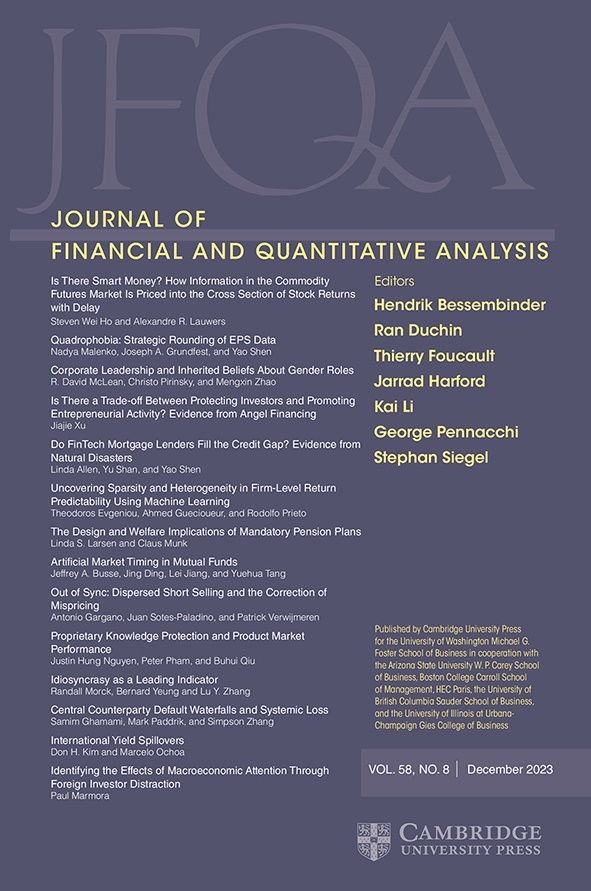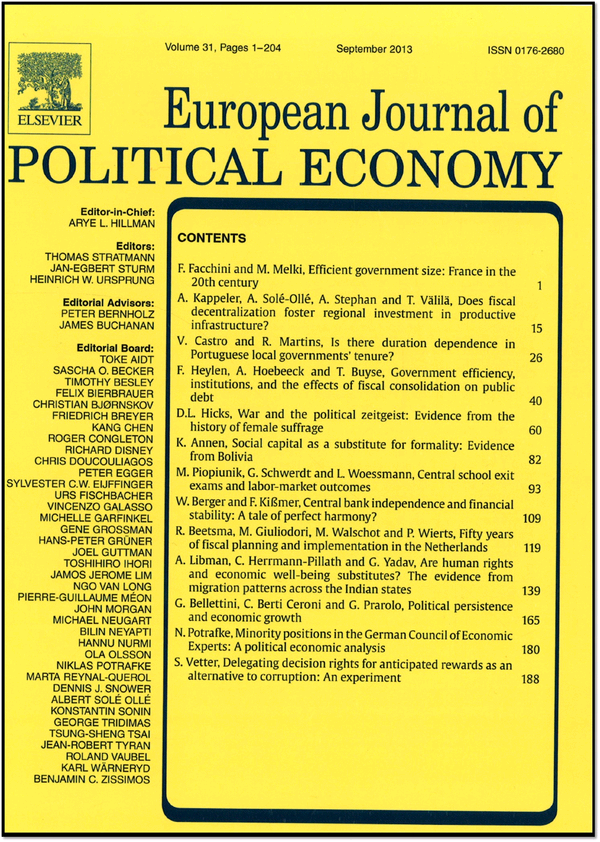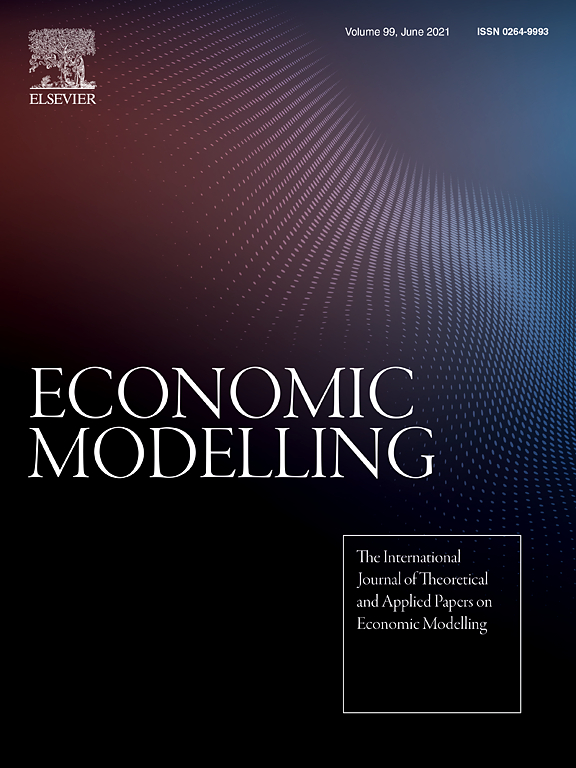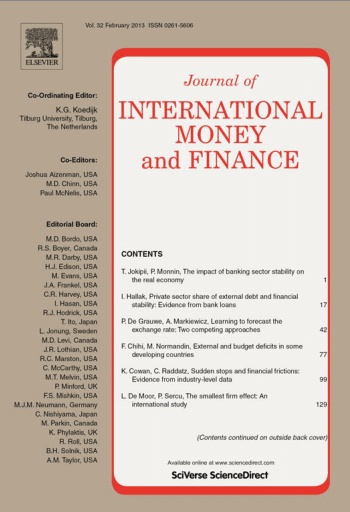Volatilität, Wachstum und Finanzkrisen
Diese Forschungsgruppe analysiert die Entstehung von Instabilitäten im Finanzsystem und die realökonomischen Konsequenzen von Finanzkrisen. Dabei werden kausale Reaktionen gesamtwirtschaftlicher Größen auf makroökonomische Schocks identifiziert. Frühwarnmodelle beschreiben das zyklische Auftreten von Vulnerabilitäten im Finanzsystem.
IWH-Datenprojekt: Financial Stability Indicators in Europe
Forschungscluster
Finanzresilienz und RegulierungIhr Kontakt

Mitglied - Abteilung Makroökonomik
PROJEKTE
01.2022 ‐ 12.2023
Sovereign Risk Shocks
Deutsche Bundesbank
05.2017 ‐ 09.2019
Frühwarnmodelle für systemische Bankenkrisen: Der Effekt von Modell- und Schätzunsicherheit
Deutsche Forschungsgemeinschaft (DFG)
01.2018 ‐ 12.2018
International Monetary Policy Transmission
Deutsche Bundesbank
Referierte Publikationen

Spillover Effects among Financial Institutions: A State-dependent Sensitivity Value-at-Risk Approach
in: Journal of Financial and Quantitative Analysis, Nr. 3, 2014
Abstract
In this paper, we develop a state-dependent sensitivity value-at-risk (SDSVaR) approach that enables us to quantify the direction, size, and duration of risk spillovers among financial institutions as a function of the state of financial markets (tranquil, normal, and volatile). For four sets of major financial institutions (commercial banks, investment banks, hedge funds, and insurance companies) we show that while small during normal times, equivalent shocks lead to considerable spillover effects in volatile market periods. Commercial banks and, especially, hedge funds appear to play a major role in the transmission of shocks to other financial institutions.

The Impact of Preferences on Early Warning Systems - The Case of the European Commission's Scoreboard
in: European Journal of Political Economy, 2014
Abstract
The European Commission’s Scoreboard of Macroeconomic Imbalances is a rare case of a publicly released early warning system. It allows the preferences of the politicians involved to be analysed with regard to the two potential errors of an early warning system – missing a crisis and issuing a false alarm. These preferences might differ with the institutional setting. Such an analysis is done for the first time in this article for early warning systems in general by using a standard signals approach, including a preference-based optimisation approach, to set thresholds. It is shown that, in general, the thresholds of the Commission’s Scoreboard are set low (resulting in more alarm signals), as compared to a neutral stand. Based on political economy considerations the result could have been expected.

Explosive Preisentwicklung und spekulative Blasen auf Rohstoffmärkten
in: ORDO, Nr. 64, 2013
Abstract
In dieser Studie wird untersucht, ob die Preisentwicklung auf Rohstoffmärkten statistische Anhaltspunkte für spekulative Preisblasen liefert. Diese Frage ist von zentraler Bedeutung in der wirtschaftspolitischen Debatte um die Regulierung des Handels von Rohstoffen. Es kann statistisch gezeigt werden, dass sich Rohstoffpreise gelegentlich explosiv verhalten. Die stärkste Evidenz für explosives Verhalten gibt es bei den Industrierohstoffen. Auch bei Nahrungsmittelpreisen können Phasen explosiven Verhaltens statistisch nachgewiesen werden. Eine wichtige Schlussfolgerung ist, dass die Ursachen explosiven Verhaltens auf Rohstoffmärkten und die Effekte von Preisblasen auf die Entscheidungen von Konsumenten und Investoren sowie Verteilungseffekte systematisch untersucht werden müssen.

Exchange Rate Regime, Real Misalignment and Currency Crises
in: Economic Modelling, Nr. 34, 2013
Abstract
Based on 69 sample countries, this paper examines the effect of macroeconomic fundamentals on real effective exchange rates (REER) in these sample countries. Using the misalignment of actual REER from its equilibrium level, we have estimated the factors explaining the extent of currency over- or under-valuation. Overall, we find that the higher the flexibility of the currency regime, the lower is the misalignment. The estimates are robust to different sub-samples of countries. We then explore the impact of such misalignment on the probability of a currency crisis in the next period, indicating the extent to which misalignment could be used as a leading indicator of a potential crisis. This paper thus makes a new contribution to the debate on the choice of exchange rate regime by bringing together real exchange rate misalignment and currency crisis literature.

Predicting Financial Crises: The (Statistical) Significance of the Signals Approach
in: Journal of International Money and Finance, Nr. 35, 2013
Abstract
The signals approach as an early-warning system has been fairly successful in detecting crises, but it has so far failed to gain popularity in the scientific community because it cannot distinguish between randomly achieved in-sample fit and true predictive power. To overcome this obstacle, we test the null hypothesis of no correlation between indicators and crisis probability in three applications of the signals approach to different crisis types. To that end, we propose bootstraps specifically tailored to the characteristics of the respective datasets. We find (1) that previous applications of the signals approach yield economically meaningful results; (2) that composite indicators aggregating information contained in individual indicators add value to the signals approach; and (3) that indicators which are found to be significant in-sample usually perform similarly well out-of-sample.















